What I am reading in 2025 (and how) 📚
A refresher on my sources, workflows, and set of incentives to stay on track.
Hey, Luca here! This is a ✨ monthly free essay ✨ from Refactoring! To access all our articles, library, and community, subscribe to the full version:
About two months ago, I got into a quest to completely revamp what I read, and how.
Reading is a big deal for me. As a full-time writer, good reading enables good writing, and in turn, business altogether.
This is not some kind of epiphany — I have known it for a long time and I am grateful to have developed disciplined routines over the years. I have also written about them at least a couple of times:
But while the output of my reading—articles—is very public and works as an accountability device to force me to think through things, reading itself is private, which means it is more fragile and it’s where I tend more easily to become sloppy.
How do I know? Well, it’s easy. I mostly read articles through the Readwise Reader, where my highlights get synced on Notion. If I open my Notion list and see the proverbial rolling tumbleweed, it means I am not doing good.
I have also found that less time spent reading strongly correlates with more time spent on social media, namely X. And I have a love-hate relationship with X: 90% of my feed is trash, but the remaining 10% feels genuinely useful. So, a net negative overall, but hard to let go completely.
All in all, whenever there’s higher pressure at work, or in life, quality reading is one of the first habits to take a back seat.
And that’s bad!
So how could I get back on track? And in a way that works for the long run?
That’s what I asked myself in September. Then I did a few things, and they are working very well. So let’s go through them!
🎯 Goals
Working top-down, I asked myself what I wanted to achieve through an updated reading workflow. Here are my answers:
Stay in touch with what matters to me in tech — which is news, opinions, and new tools. More on that later.
Store ideas and resources in an effective way — for the long term, so I can reuse them for my writing.
Delete X from my iPhone — and get those 45mins / day back.
I quickly figured out that:
#2 was already working well, so no need to make big changes, and
#3 was strictly dependent on #1. If I achieved #1, then #3 would easily follow (spoiler: it did!)
So, next, I polled the Refactoring community about their favorite readings, and got a treasure trove of sources (thank you so much folks 🙏).
I put everything in a spreadsheet, and tried to organize stuff by category, which made me ask the following question:
👓 What do I need to read?
When presented with this overwhelming list of stuff, I took a step back and reflected on what I truly care about. It turns out it’s three things:
📰 News — stuff that happens in tech every day, in breadth more than in depth. I don’t care about e.g. deep dives into big tech strategies, but I care that Meta or OpenAI released a new thing, or that Sam Altman said some outrageous thing in an interview.
🔧 Tools — I am a sucker for tools, and I really like to try new ones. It’s both about improving how I do things, and about keeping my taste fresh about what quality software looks like.
✏️ Stories — or call them essays, or opinions. Insights from the experience of individual people, like the ones I write on Refactoring.
This is a very basic categorization, but was already helpful to me in creating a balanced portfolio.
Another way to categorize sources is by type of publication, rather than topic. I find there are three different types you can read:
Listings — which provide lists of items voted on by a community. E.g. Hacker News, Product Hunt, Lobsters, of course Reddit, and in a way also Techmeme.
Magazines — which provide many articles every day written by a variety of authors. E.g. The Verge, Gizmodo, Ars Technica.
Individual blogs — which provide sporadic articles (e.g. once a week, or less) always written by the same author. E.g. Refactoring, Simon Willison, Charity Majors.
These categories have some overlap with the others above, but it’s trickier than it seems:
Listings are the more varied and cover the whole spectrum of news, tools, and stories. They are high-signal and in my experience it’s worth monitoring many of them.
Magazines are mostly about news, and occasionally tools. Since they cover news, they are all similar, but each with slightly different vibes. My advice is to pick one that you feel good about, and stick to it. Out of the main ones, I read The Verge the most often.
Blogs are usually about essays and opinions, but occasionally comment on news too, like Daring Fireball (one of the OGs), or Simon Willison.
What about social media, you may ask? Well, in my experience, the vast majority of the valuable stuff that happens on social media gets eventually picked up anyway by listings like Hacker News, Techmeme, and so on. So you don’t miss a lot by staying away from it. And when you combine it with the 1) very low signal-to-noise ratio, and the 2) addictive effect, it’s very hard for it to be a net positive to your information diet.
That’s not to say you should not use social media—YMMV and it’s up to you—but the idea that you have to use it in order to stay up to date is largely bullsh*t, and one that I have told myself for a long time.
So once you have your reading list, how do you actually read?
🔧 How to read things
This is a part where my workflow hasn’t changed dramatically, but I have rather tightened some screws. Here are my steps:
1) Put everything on Mailbrew
I have put all the feeds on Mailbrew and I send to myself a daily digest of everything that those feeds have published.
My digest is public so you can clone it or simply subscribe to it to read exactly the things that I read everyday. I tweak and add sources all the time so, if you are undecided, by subscribing to mine you also get that kind of maintenance for free.
I have to warn you, it’s a long digest! But I am surprised by how fast I can scan it. Also, mind you, I discard almost everything and end up reading only ~10% of what’s in there.
3) Save for later + highlight
So every day I go through the digest and decide what articles seem interesting, and I do one of two things: I either read them on the spot, or save them for later.
In either case, I use the Readwise extension (or directly the Readwise app) to take highlights, which get automatically stored on my Notion.
4) Store what you read
I believe it’s crucial to have a reliable place where to store bits of the things you read.
I have this workflow with Readwise and Notion, but it could be as simple as a single note on Apple Notes where you copy/paste interesting quotes.
My advice on this is to start simple and only complicate stuff when it becomes unmanageable. Avoid premature abstraction!
Anyway, it’s important that you have this place, so you feel that you are reading with a purpose, and you are growing some knowledge repo that lives outside your brain.
5) Use what you read
The best incentive for reading is having to do something with that reading. If you are an engineer or a manager in tech, some ideas are:
Creating a Slack channel at work where people share interesting readings, and aiming to be a regular contributor there.
Aiming to write a quarterly blog post about the most interesting ideas you read about.
Setting a pure personal growth goal, like reading 100 articles in a year (and having them stored somewhere).
All in all, you might think reading is obviously valuable and will stick by itself. Well, in my experience, this is not the case. Reading well and regularly is hard, so if you are serious about it, try to create some practical flywheels for yourself.
As a content creator, I am not immune to this either. Even if I need to write new articles every week, I may easily become sloppy and just recycle / recombine old ideas in slightly different ways.
Which is why I am trying to create more granular incentives for myself 👇
🥇 Creating incentives
By reviewing my workflow, at some point I had the obvious realization that the parts I struggle the most with are exactly those for which I don’t have a build-in-public version:
So I tried two things:
I made my reading list public and subscribable on Mailbrew — you can find it here
I wrote an experimental digest email on Hybrid Hacker, our sister newsletter, containing the best articles I had read the previous week:
Both experiments were a huge success.
I shared my reading list on LinkedIn and on the community, and already got 30+ subscribers plus a lot of warm comments. This is not going to be a business whatsoever, so I am simply happy about it.
I also asked Hybrid Hacker readers to rate the unusual newsletter they received, and the feedback was astounding:
Together, these gave me incredible energy and provided the missing incentives to keep the underlying habits tidy. Now I feel a strong need to:
Keep my reading sources relevant and up to date because there are others who depend on them, and
Read more and better because I am responsible for identifying great pieces that I can recommend to readers.
So, these were experiments so far, and the jury is still out on whether to continue them or not, but we are off to a very promising start.
📚 What about books?
Finally, what about books? I have a hard time reading non-fiction books regularly, which is why we have the book club — accountability, again!
Thanks to the book club, over the past two years I have read on average one book every two months, which is the most I have ever read in my life.
Currently we are reading The Phoenix Project, which I already read about 10 years ago, and was one of my inspirations for Refactoring!
📌 Bottom line
And that’s it for today! Here are the main takeaways:
🎯 Define your reading goals clearly — focus on what truly matters to you (for me it’s news, tools, and stories) rather than trying to consume everything that comes your way.
🗂️ Categorize sources strategically — balance your portfolio across listings (Hacker News, Lobsters), magazines (The Verge), and individual blogs for good coverage without overwhelming yourself.
📧 Centralize with daily digests — Mailbrew can consolidate all your feeds into one manageable place, making it easier to scan and filter what’s worth reading.
✍️ Capture highlights — use tools like Readwise to save insights in a searchable repository that compounds over time and supports your thinking and your creative work.
🌐 Build in public for accountability — making your reading habits visible (through shared reading lists or weekly digests) creates powerful incentives to stay consistent and thoughtful.
🚫 Social media is optional, not essential — most valuable content from social platforms eventually surfaces on other sources anyway, so you can stay informed without the addictive downsides.
See you next week!
Sincerely 👋
Luca







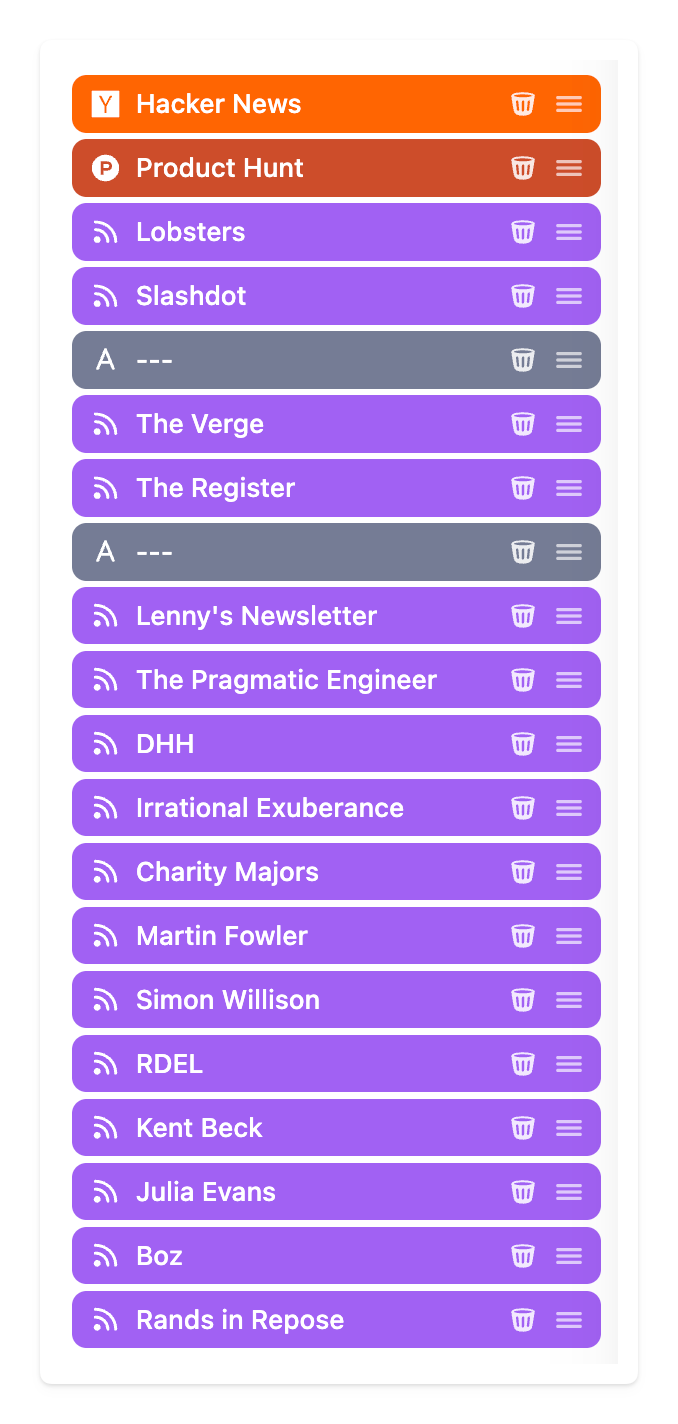

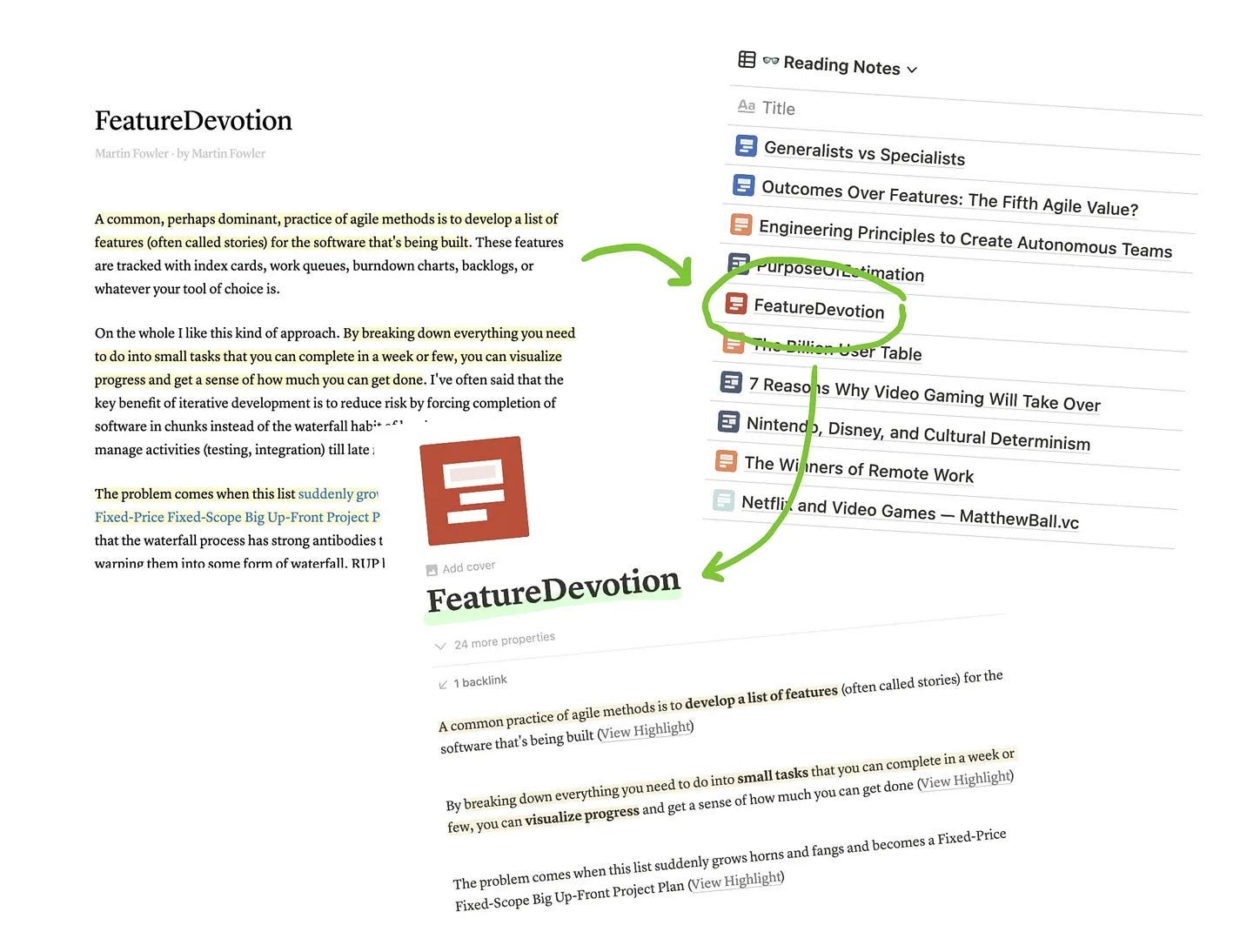
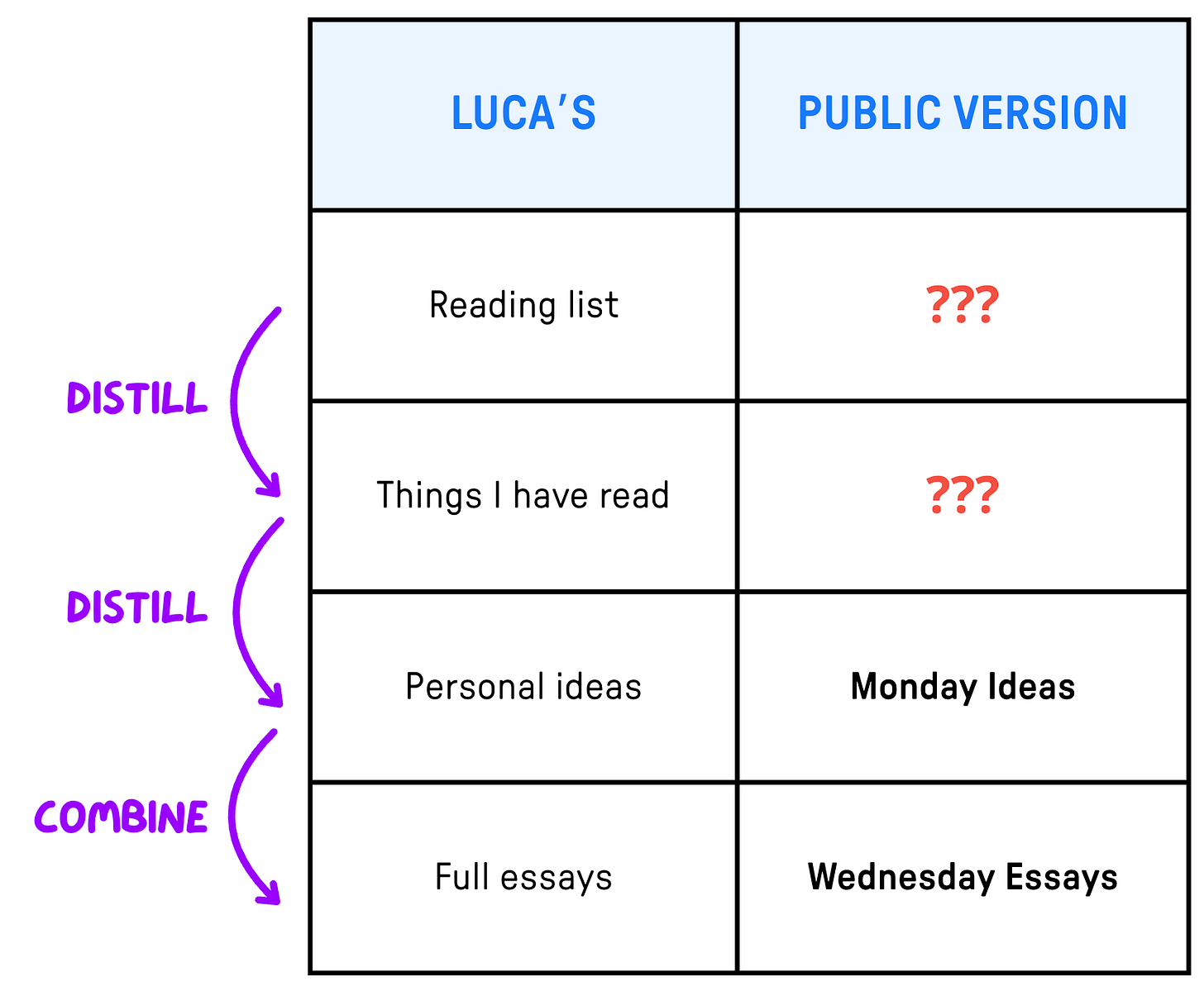

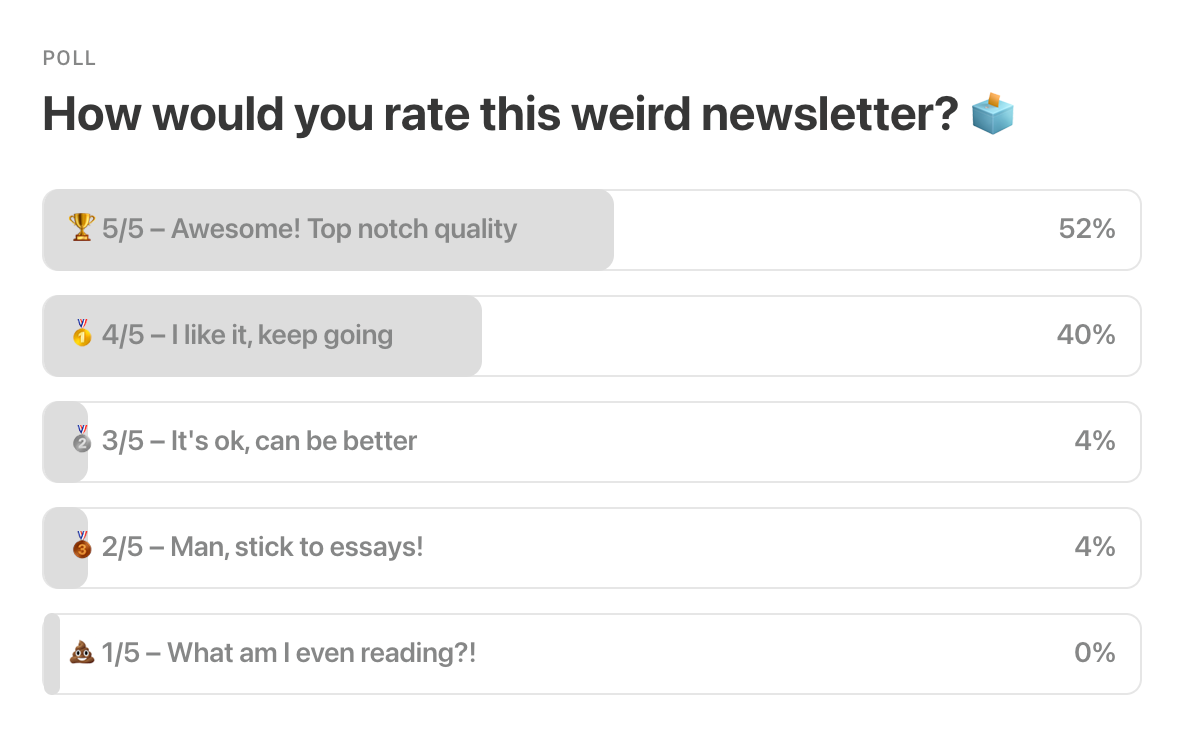
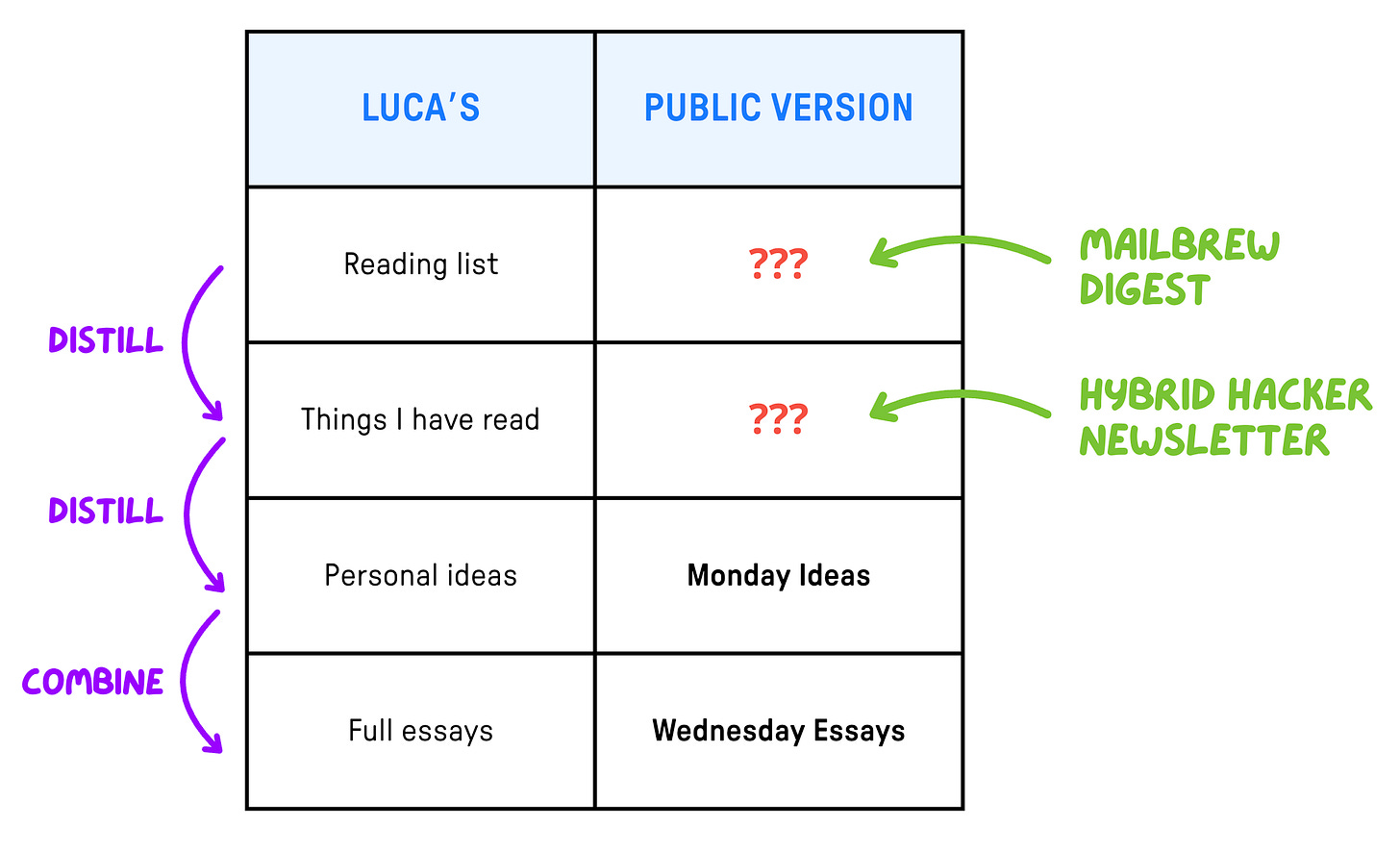
Definitely appreciate the commentary about social media. Especially now that all the platforms have moved to purely algorithmic curation, what we get is:
- Engagement bait on LinkedIn
- Rage bait on Twitter (currently known as X)
- Hive-mind reactions on Reddit.
This feels like a great blueprint for anyone who wants to stay sharp in tech without drowning in noise.